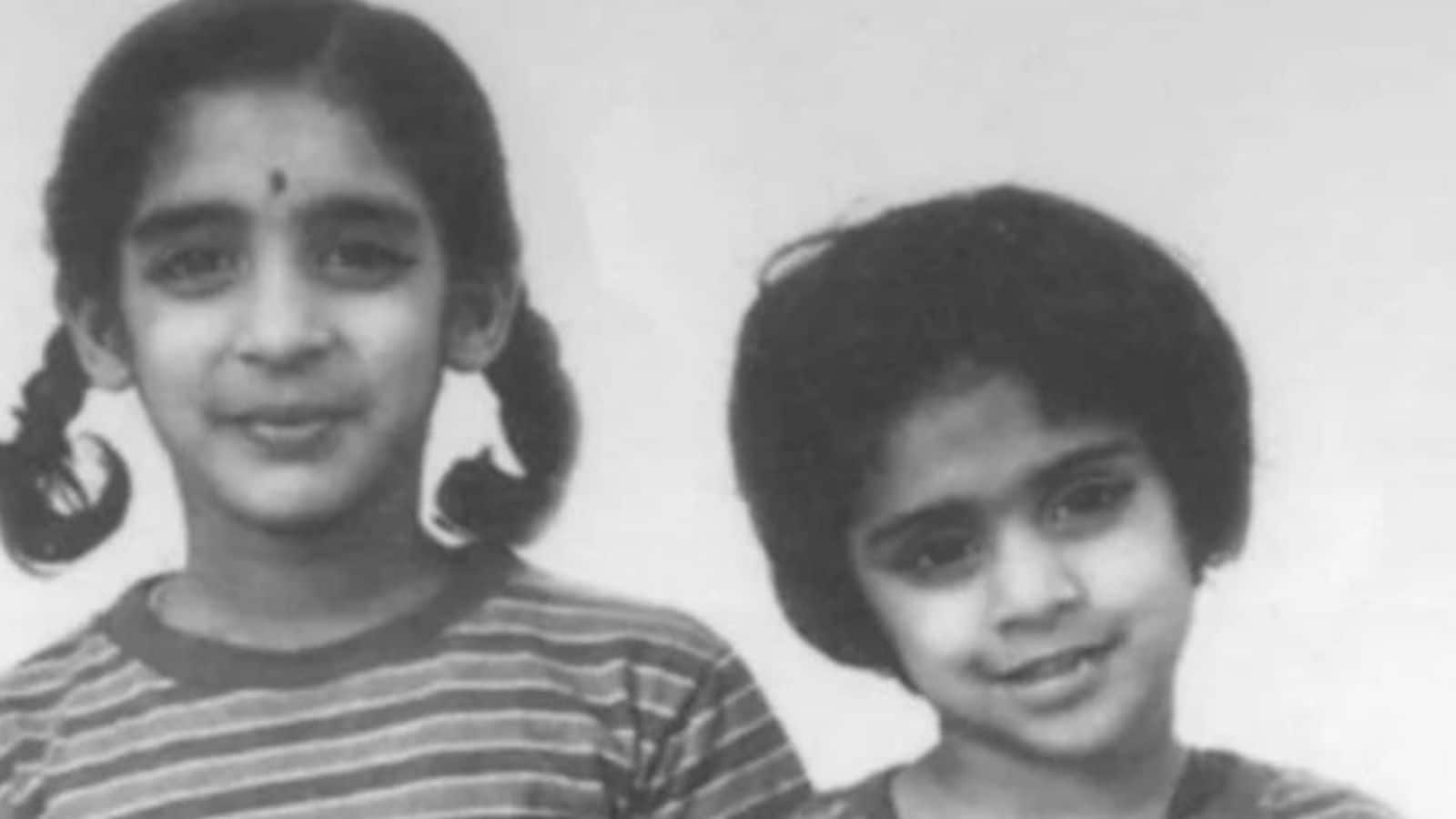Bipolar disorder is a fairly common mental health condition worldwide, including in India. However, owing to the lack of awareness and access to mental health services, experts say the treatment gap ranges from 70-90% in our country. Understanding its symptoms and causes, knowing the treatment options available, and whom to reach out to, can help make correct and timely diagnosis and enable those living with bipolar disorder to not just cope with it but also to quell the fear and stigma, as is often seen associated with issues of mental health, effectively.
But what exactly is bipolar disorder? According to mental health experts, it is a disorder of two extreme moods or two extreme poles of moods, and hence the name ‘bipolar disorder’. It’s characterised by extreme emotional instability and mood swings that include emotional highs known as mania and emotional lows called depression.
“Bipolar disorder is an affective disorder in which, as the name suggests, episodes of two extreme moods can be seen that include mania or hypomania and depression,” says Anuna Bordoloi, consultant clinical psychologist at Fortis Healthcare in Noida.
“During manic episodes, the person feels euphoric, energetic, or unusually irritable. During depressive episodes, they feel sadness and hopelessness and lose interest in most activities,” explains Dr Shaunak Ajinkya, consultant psychiatrist at Kokilaben Dhirubhai Ambani Hospital in Mumbai.
“There are two poles (low and elevated) on the mood. Each of these may last from days to weeks and they may or may not be associated with loss of contact from reality in the form of psychotic symptoms,” says Dr Achal Bhagat, senior consultant psychiatrist and psychotherapist at Indraprastha Apollo Hospitals, and chairperson of Saarthak, a mental health service organisation based in Delhi.
Differentiation is key
To receive appropriate treatment for a condition, a correct diagnosis is pertinent. It becomes even more important to know whether this can be confused with other medical conditions that might mimic or overlap with the symptoms of bipolar disorder.
Dr Bhagat of Apollo Hospitals says there are two realities about psychiatric disorders. “Several psychiatric disorders can co-exist, which are called comorbidities. Sometimes it might be difficult to distinguish between them,” he says, adding, “A person with bipolar disorder might also have some features of anxiety, obsessive-compulsive disorder (OCD), or psychotic symptoms such as unreasonable suspicion or fear of persecution.” Medical experts concur that the symptoms of this disorder can be confused with other mental health conditions like recurrent depression, schizophrenia, schizoaffective disorders, attention-deficit/ hyperactivity disorder (ADHD), substance-related mood issues, and the like. “For example, major depressive disorder (commonly known as depression) has similar symptoms to the depressive part of bipolar disorder. Schizophrenia may also have some features which are similar to those seen in severe mania. Symptoms of impulsivity and hyperactivity found in manic episodes may be mistaken for ADHD, and mood instability, and repeated suicidal thoughts are also features of borderline personality disorder,” says Dr Ajinkya of Kokilaben Dhirubhai Ambani Hospital.
Healthcare professionals caution against any kind of self-diagnosis, and a sustained change of mood distressing the individual and affecting life should be reported to a professional for diagnosis. Differentiating it from other similar looking conditions involves careful assessment of the patient’s history, symptom patterns, presence of manic episodes, duration and frequency of each episode, context of symptoms as well as presence of strong family history. “Professionals also use different psychological tests for any diagnostic clarification, if needed,” says Bordoloi of Fortis Healthcare.
Experts say it’s not easy to pinpoint one single cause behind this condition as the exact cause is not completely understood yet, despite it being common worldwide. It is caused by a combination of factors like genetic vulnerability, biological changes and environmental and life stressors.
Trauma caused by significant and stressful events such as family conflicts, employment difficulties, hostile work environment, loss of loved ones, loss of work, marriage, having children, emotional and mental abuse, and substance abuse of tobacco, alcohol and drugs like cannabis and cocaine can play a part in precipitating the manic or depressive episodes and triggering or exacerbating bipolarity.
Genetic vulnerability means that this disorder runs in families, putting people at risk, who have first-degree blood relatives such as a sibling or parents with this condition. “Many genes like ANK3 and CACNA1C have been linked to the disorder, although no single gene has been found responsible,” says Dr Ajinkya of Kokilaben Dhirubhai Ambani Hospital. “There is no one particular cause; it’s a matrix of causes and in that matrix of causes, it is important to address all the causes in the solutions that we look for somebody living with bipolar disorder,” says Dr Bhagat of Apollo Hospitals.
Distinctive features
Bipolar disorder is characterised by episodic changes in mood, which include alternating mania and depression. During mania, one can have elevated, irritable or euphoric mood, decreased need for sleep (less than 3 hours per day), grandiose thinking, inflated self-esteem, overconfidence, increased energy, and activity levels, rapid speech and racing thoughts, easy distractibility, impulsive and risky behaviours (such as spending sprees, unprotected sexual acts, indiscriminate substance use), loss of inhibition and sometimes loss of contact with reality.
A depressive episode is characterised by persistent sadness, loss of interest or pleasure in daily activities, difficulty concentrating, loss of energy, easily getting tired, changes in appetite and weight, sleeping too much or too little, feelings of guilt, worthlessness, hopelessness and thoughts and behaviour suggesting self-harm and suicide. There are sleep and appetite disturbances in both ways and both phases. Symptoms can vary in intensity and duration, with episodes lasting from days to weeks, say medical experts.
The typical age of onset of bipolar disorder often manifests in late adolescence or early adulthood. However, it can emerge at any age, including childhood or later in life. Generally, the first episode happens between 20 and 25 years, say experts. “There isn’t a specific age, but screening may be particularly important during adolescence and early adulthood if there is a strong family history of bipolar disorder or other mood disorders, or at any age group if someone has symptoms suggestive of bipolar disorder,” advises Dr Yogendra Singh, consultant psychiatrist at Fortis Hospital, Noida and Greater Noida. Dr Bhagat of Apollo Hospitals simply puts the symptoms as a situation when a person has a sustained change of mood in either form, extended over days and disproportionate to the person’s circumstances.
With proper treatment, many individuals can have control over their symptoms and lead fulfilling lives. This doesn’t mean that there’s a ‘cure’ for this disorder in the general sense. It means that people can be free of symptoms for a considerable amount of time and achieve long periods of remission. However, they do require ongoing medical treatment and psychological support as the goal of the treatment is to manage symptoms, reduce the frequency and severity of mood episodes, and improve overall functioning and quality of life, say experts.
“Many individuals suffering from bipolar disorder can achieve periods of stability and symptom remission with proper treatment but there is no cure for bipolar disorder in the sense of complete and permanent elimination of symptoms, that is the individual will be required to continue the medication and therapy,” underscores Dr Singh of Fortis. “People have remissions from episodes of bipolar disorder as it is an episodic disorder and may have years without another episode and it might come back at a later stage. What is known is that taking mood stabilisers as prescribed does alter the course of the disorder and prevents the relapses from happening and people do need to take the medicines for three to five years at least. Sometimes they might need to take it longer as well. Medicines are essential to prevent relapses,” emphasises Dr Bhagat of Apollo Hospitals.
It has also been seen that having a diagnosis does not mean being symptomatic and people can return to their premorbid personalities in between episodes for a long period. At the same time, there are also cases where symptoms stay for a long time, and over a period of time people develop cognitive changes, resulting in a decrease in the ability to trust the information, to concentrate, and to solve problems. “But mostly, it’s a disorder that responds well to treatment and most people can have a good control of the illness with medicines and have a good quality of life,” says Dr Bhagat of Apollo Hospitals.
Living with it
While underlining that not everybody has all the symptoms, experts say one of the key symptoms that will make one qualify for diagnosis includes mood change that has been sustained for some time and is affecting one’s day-to-day functioning. It is generally a clinical diagnosis, with some tests to rule out any physical causes such as thyroid disorders or substance use that may mimic a bipolar mood disorder.
Treatment options include medications like mood stabilisers, antipsychotics and antidepressants and psychotherapy like cognitive-behavioural therapy (CBT), interpersonal and social rhythm therapy (IPSRT), family therapy to help individuals and their families understand and manage the symptoms effectively, points out Dr Ajinkya of Kokilaben Dhirubhai Ambani Hospital. Lifestyle modifications like avoidance of substance use, regular exercise, a healthy diet, sufficient sleep, and stress management techniques are also crucial. Support from family, friends and support groups can provide significant emotional assistance and encouragement, he says. “Treatment for bipolar disorder is tailored to the individual’s specific needs and involves a combination of medication, psychotherapy, lifestyle changes, and, if needed, hospitalisation,” says Dr Ajinkya.
“Hospitalisation is necessary for individuals who are at risk of harming themselves or others or for those who require intensive monitoring and treatment. ECT (electroconvulsive therapy) is used for severe cases of mania and severe/suicidal depression or for those who are treatment-resistant and unresponsive to medication and psychotherapy,” he adds. There are social interventions, too, that are essential, says Dr Bhagat of Apollo Hospitals. For example, corporates having mental health policies, making reasonable accommodations for those living with the disorder, social and policy initiatives such as making treatment accessible, and making drugs available affordable.
Dr Bhagat, who is also a psychotherapist, discusses the role of psychotherapy in this condition and says it is indeed helpful to understand the condition and learn skills to cope but it is not a replacement for medication. “Therapy alone is not enough in this condition. It’s a myth that has been almost glamorised. Therapy is not a magic washing machine that will cure everything,” he warns.
What you should know
- Bipolar disorder is fairly common in India (1-2%) and worldwide (2.4%)
- Due to lack of awareness, access to mental health services, treatment gap is high(70-90%) in India
- Role of family and friends, existence of workplace policy important in treatment
- Starting timely treatment crucial, prolonged condition can adversely impact cognitive abilities
- With proper treatment, people can achieve longer periods of remission of symptoms







